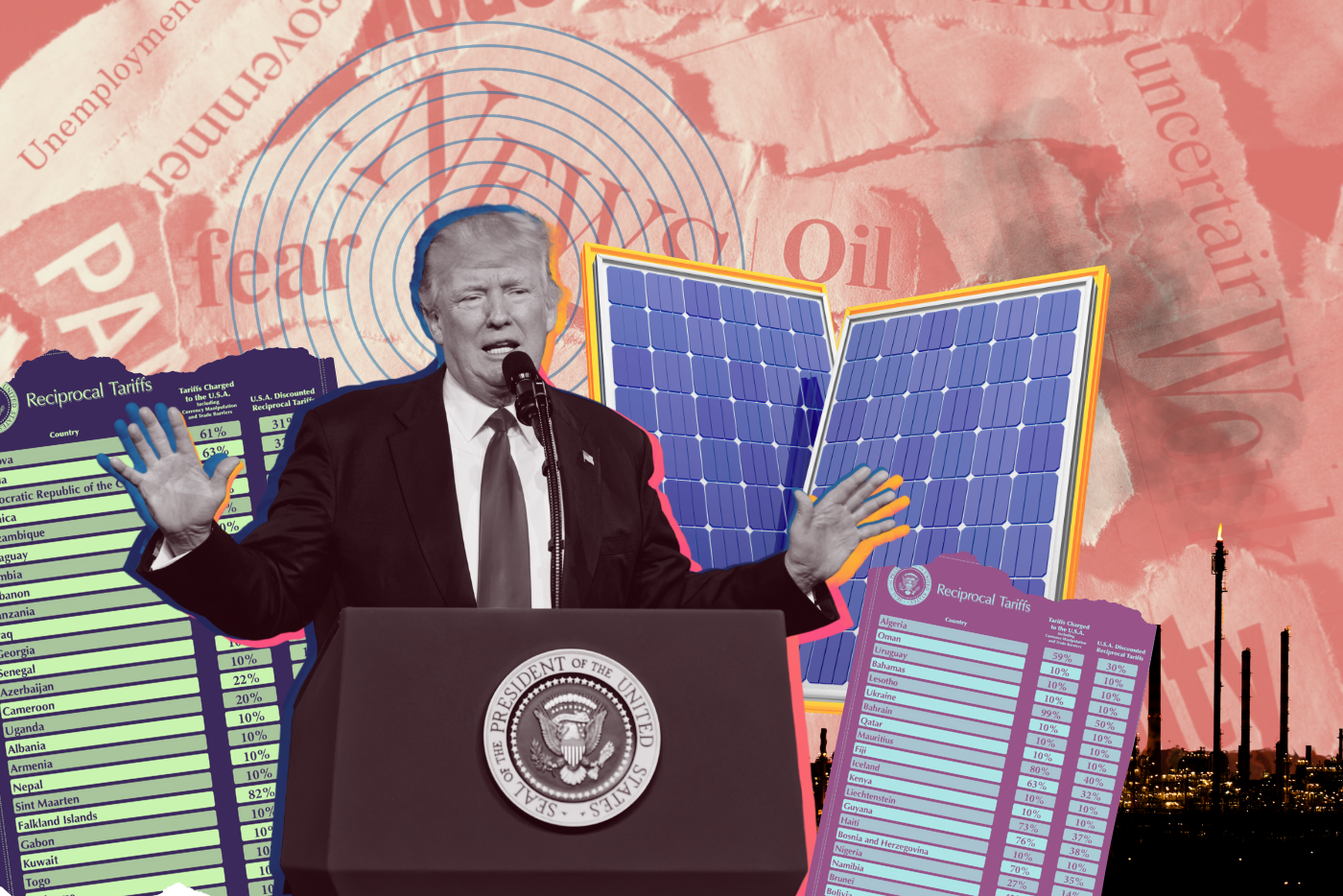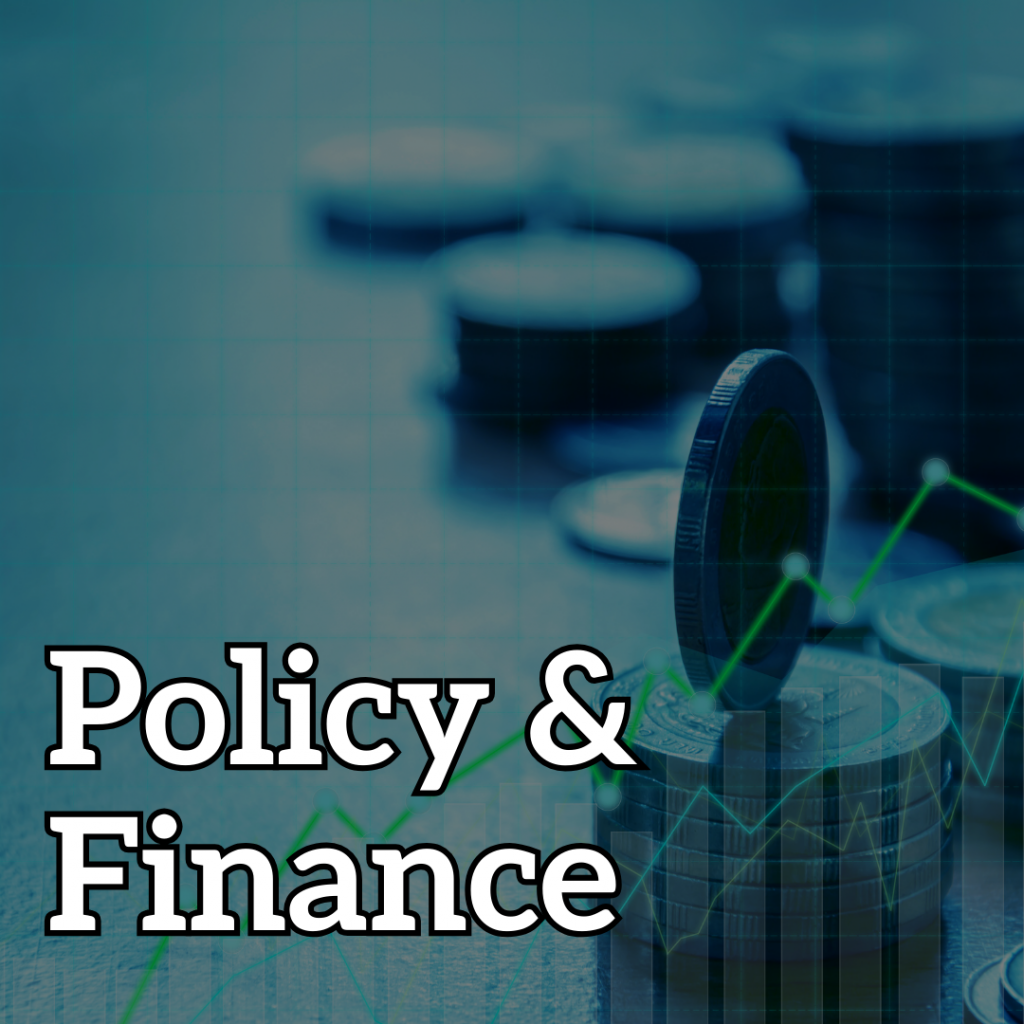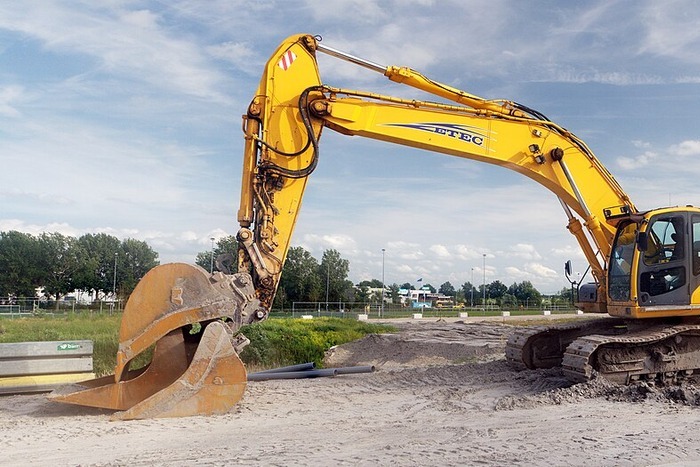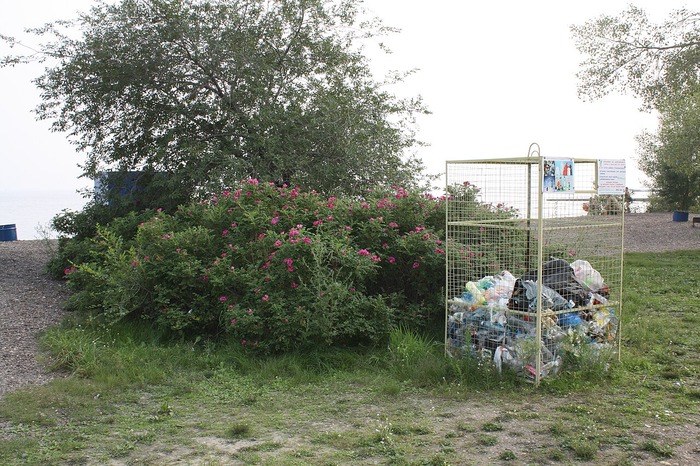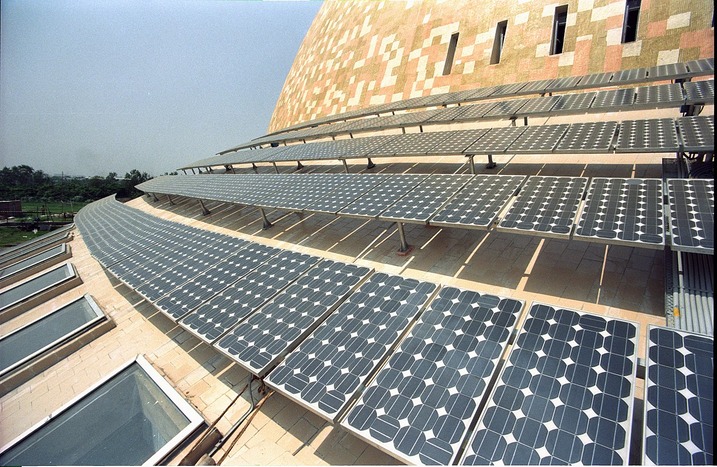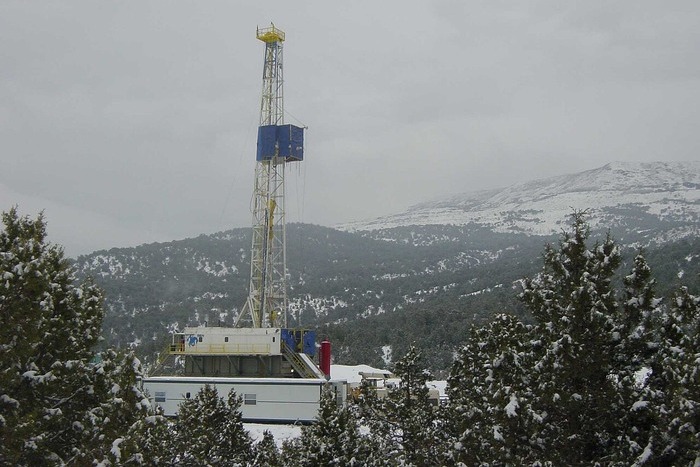
Trump has slapped tariffs on 180 countries. Photo: Riddhi Tandon
How Trump’s tariff shock could reroute decarbonisation
The new tariffs are likely to trigger a global reset in supply chains and climate strategies. But the disruption could also open space for new alliances and a more diversified energy transition
In his last term, too, Trump had launched a tariff war, but that was only against China. This time around, he has slapped tariffs on 180 countries. As of now, nearly half of these countries have won a 90-day reprieve. By the end of these three months, however, if they don’t cut import tariffs on American goods or just buy more from the USA, the tariffs might come back.
“This is the most significant disruption to the global rule-based order established after the Second World War,” said PV Ramesh, a former IAS officer who now works as an international development professional. “After the war, the world, led by the United States, had created the United Nations system, Bretton Woods institutions, WTO, etc., which, despite being weighed in favour of developed countries, were still norm- and rule-based. We are now beginning to witness a stress test to that order.”
Even if Trump rolls back certain measures — he has temporarily exempted Chinese smartphones, computers, solar cells and electronics from his tariff — global supply chains are unlikely to return to what they were.
Not only are some BRICs countries talking about moving away from dollar-denominated trade, the EU is also mulling closer trade ties with China. There is also the likelihood that China will offload more of its production elsewhere in the world. Along the way, supply chains developed over the last 30 or so years are heading for a recast.
The reasons for this trade war are yet unclear. Some experts attribute this to the Trump administration’s weak understanding of trade balances. Others call it a masterly gamble. Most think Trump is trying to keep China at bay. “This is mainly about the USA trying to contain China,” a Mumbai-based stock analyst told CarbonCopy on the condition of anonymity. “Trump has let the rest of the world off with a 10% hike in tariffs. His main target is to weaken China by bringing down its trade surplus.”
While the jury is still out on these hypotheses, another question needs to be asked.
Until now, both China and America have been central players in the decarbonisation landscape. China dominates the world in renewable energy (RE) technology and manufacturing. As for the US, given its economic and political heft, its stance on climate change can make or mar the world’s response to climate change.
Today, as Trump repudiates climate change, pivots to fossil fuels, and unleashes this trade war, what lies in store for global decarbonisation?
Understanding the tariff shock
Solar panels are one way to understand the ongoing chaos.
Today, China’s share in all the manufacturing stages of solar panels (such as polysilicon, ingots, wafers, cells and modules) exceeds 80%. To boost local manufacturing, the US has been hiking its tariffs on Chinese polysilicon, wafers and solar cells — including a jump from 25% to 50% during the Biden administration’s final months. In response, Chinese manufacturers shifted manufacturing lines to Vietnam, Thailand, Malaysia and Cambodia. These four countries now account for over 80% of US solar module supply. Some production also moved to Laos and Indonesia.
By March last year, between these measures and counter-measures, the price of a Chinese solar panel in the US stood at 15.6 cents/watt, compared to 18.5 cents for a US-made panel getting Inflation Reduction Act subsidies. Even as US module manufacturing capacity soared, touching 52.3 GW by 2025, enough to meet domestic demand, these factories were almost entirely assemblers, using imported solar cells to produce modules.
As in India, cheap panels from China got US power companies to favour imports over more expensive domestic panels. In the US, too, backwards integration was just beginning. Aided by the Inflation Reduction Act (IRA), solar cell manufacturing units were starting to come up.
In the four months since he took charge, Trump has rolled back much of this arrangement.
One, he hiked tariffs on Vietnam (46%), Thailand (36%), Malaysia (26%), Cambodia (49%), Laos (58%) and Indonesia (32%). This would have resulted in a narrowing of costs between imported and locally manufactured solar panels if not for his subsequent decision to roll back tariffs for solar cells.
This rethink, which could be seen as a reprieve for these countries, coexists with another consequential Trump decision. He is threatening to review production tax credits promised to RE manufacturers under the IRA — a move which will stymie plans to make solar cells in the USA, and is a part of Trump’s larger war on Biden’s clean energy plans.
The combination of these decisions creates a contradictory outcome. If solar manufacturing doesn’t pick up in the USA, imports will continue. “The only difference is: shipments from these countries will now pay an extra 10% to the USA which, I think, is what Trump had wanted all along from everyone other than China,” said the stock analyst.
Or take batteries. Here, too, China is hegemonic. More than 90% of all lithium ion battery cells deployed in the US storage market in 2024 came from China. Some startups are trying to make Lithium Iron Phosphate (LFP) cells in the US — and they, too, are backed by the IRA’s Production Tax Credit. In other words, if the tax credit goes away, the US will continue to rely on Chinese imports — shipped from other countries if not directly from China. Even if tax credits stay, the US will still be dependent on imported cells till production picks up — and thereafter, for anodes, cathodes and the electrolyte.
This is where things get interesting.
The US’ insistence on trade balance
Given high tariffs, RE prices will rise in the USA. In Trump’s tariff war, however, the onus for keeping prices affordable falls not on the administration, but on importers, exporters and other countries.
This, writes former Greece Finance Minister Yanis Varoufakis, is very much by design.
Importers and exporters might have to take the 10% tariff onto their books. This tariff, however, will be higher if the exporting country doesn’t buy more from the USA — or open their markets to American goods. “The architect of the free market is now rent-seeking for protecting the market and maintaining the dollar,” said a solar park developer on the condition of anonymity.
Countries have already begun approaching the US. To save its garment industry from Trump’s 37% tariff, Bangladesh has agreed to buy US cotton. Oil-rich Saudi Arabia has agreed to buy LNG from the USA. Other countries might end up buying more US oil/gas or weapons — or get more tailored demands ranging from freeing Americans “wrongfully detained abroad… working with US artificial intelligence companies… or combatting global drug trafficking.” Other countries, like Cambodia, have offered to drop import tariffs on US products.
Both these responses are flawed. “The trade deficit of any country is a function of its efficiency,” said the solar developer. If US cotton made commercial sense for Bangladesh, the country would have been already buying it. Similarly, when a country drops import duties on, say, US agricultural commodities, its farmers will pay the price. “Trump may soon discover that he has manufactured dissent abroad,” wrote Varoufakis.
North-south or south-south?
As things stand, Trump has unveiled his tariff shock at a time when most developing countries are already scrounging for funds. The US has also slashed foreign aid and funding support for 5,800 global health programmes, including vaccine funds for poor countries. This includes, incidentally, a health project in Bangladesh serving 144,000 people, which provides food for malnourished, pregnant women and vitamin A for children. In other words, the country now has to protect its textile industry from tariffs by buying more from the USA, while also finding funds to run such programmes. This expenditure will eat into Bangladesh’s already inadequate allocations for climate adaptation and mitigation.
Hardcoded into these details is another way in which Trump’s tariff war might play out — with more south-south trade than before. Take Laos. “(The country) may now be forced to look toward regional trade partners, particularly China, which has already been increasing its influence in Laos through major infrastructure projects,” says this report in Laotian Times.
It isn’t the only one. A clutch of countries— ranging from China to Ivory Coast — are looking for newer markets. “A new global trading system will evolve sooner or later,” said Ramesh. “If China wants soya or beef, it will now buy from Brazil or another country. In this way, newer bilateral and regional trade equations could emerge and result in reduced dominance of the US as a global hegemon.”
What does this mean for the global energy transition?
The coming pivot in RE supply chains
In RE, too, countries will have to look for alternatives to the US. Between Trump’s rhetoric about “Drill, Baby Drill”, the US’ exit from the Paris Agreement, Republicans’ crackdown on ESG, the assault on wind energy, and clean energy funding cuts, decarbonisation is going to slow down in the country.
Countries and companies supplying to the US will need to replace lost sales with orders from elsewhere. “Everyone selling to the US until now — EU, Mexico, China, Canada… — will try to sell elsewhere,” said the developer. “The world will see a multi-dimensional trade war.”
Solar cells, if the reprieve stays, might be an exception to this rule. “China might supply those as before to the USA,” said the solar developer. “But, for everything else, it will dump in other markets.”
On the other hand, if the reprieve goes, they too will flood other markets.
This is where opportunities lie. Countries not manufacturing those solar cells, say, will get them at a lower cost. In energy circles, for instance, Pakistan made headlines after it used cheap Chinese panels to build itself a solar boom. As for countries manufacturing solar cells, they have a choice of either moving up the value chain or erecting tariff or non-tariff walls. CBAM is one instance here.
“The problem with tariff walls is that profit-booking starts,” said the developer. “That comes at the cost of growth of the sector.” And so, countries will have to decide whether to accept, say, cheap Chinese steel and focus on more value-adding work. Or to erect tariff walls to protect steel-makers that will, however, make downstream manufacturers globally uncompetitive.
India, for instance, used tariff and non-tariff barriers to keep Chinese panels out of the country. As a result, as CarbonCopy wrote last year, the sector saw profit-booking and a stampede by inexperienced firms into module assembly. With that, domestic panel prices almost doubled, slowing the adoption of solar power in the country.
It will be interesting to see what happens next. Will Trump will rethink his tariff war? “The US will see mid-term polls late next year,” said Ramesh. “If Trump fares poorly, the tariffs might even be short-lived.” There are other questions. Trump wants firms to “make in the US”. What does that mean for its emissions? Will countries rethink their trade with the USA and pivot to other geographies? The US, remember, is also a well-heeled market. As its gates close, will the world see more bottom of the pyramid innovations? Cheaper EVs than, say, self-driving EVs?
Apart from these, there is a bigger question.
The climate change question
For far too long, the USA has been a hegemonic player in the climate change landscape.
Under Trump, as the country isolates itself — in both global trade and multilateral forums — there is a chance that the rest of the world can have more of a say.
A recent instance of this possibility came from last week’s successful multilateral talks to slash shipping’s greenhouse gas emissions. Coming after 10 years of talks, the agreement deals with commercial shipping and mandates that, starting in 2028, ship owners use cleaner fuels or face fines. “The deal was nearly derailed after Saudi Arabia forced a last minute vote and the US pulled out of talks in London — but it eventually passed on Friday,” reported the BBC.
That is the bigger picture here. In the short-term, Trump’s tariff shocks will clearly push the world into a slowdown. In the medium- and long-term, the picture is hazier, even hopeful— that the rest of the world may now get a stronger voice in the climate conversation – and find south-south trade more remunerative.
Weather office alert on severe heat waves and heavy rainfall in parts of India
The India Meteorological Department (IMD) issued severe heatwave and heavy rainfall warnings for different parts of India over the next several days. These conditions are predicted to affect infrastructure, agriculture, and daily life, TOI reported. The IMD warned that till June severe heatwaves will hit areas like Delhi, Rajasthan, Madhya Pradesh, and portions of Karnataka. By mid-April, Delhi is expected to see temperatures as high as 40°C, breaking previous records, the newspaper reported.
More heatwave days than usual are predicted for Rajasthan, Gujarat, Haryana, Punjab, Madhya Pradesh, Maharashtra, Uttar Pradesh, Chhattisgarh, Bihar, Jharkhand, West Bengal, Odisha, Telangana, Andhra Pradesh, northern Karnataka, and Tamil Nadu.
Bihar and Jharkhand are expected to experience significant rainfall, which could lead to localised flooding and disruptions. In Karnataka, districts such as Raichur, Koppal, Gadag, Dharwad, and Haveri have been issued yellow alerts due to anticipated thunderstorms and lightning. The IMD recommended light clothing, avoiding direct sunlight during peak hours, and staying hydrated for people in heatwave-affected locations. Residents hit by high rainfall should be aware of the possibility of waterlogging, make sure that their homes have adequate drainage, and refrain from making needless trips during inclement weather, the weather office said.
40% chance of normal monsoon, 30% above normal, says Skymet in relief for cultivators
The 2025 monsoon season is likely to be in the normal category, private forecaster Skymet Weather said. The HT reported that the season is expected to lead to 103% (±5%) of the long period average (LPA) amount of rain. Last year’s monsoon was above normal at 108% of the LPA, though the nationwide figure typically masks significant regional variations with some areas experiencing flooding and others facing deficits.
The LPA for the 1971-2020 period is 87 cm, with a “normal” monsoon range defined as 96-104% of LPA. According to Skymet, there is a 40% chance of normal monsoon, 30% chance of above normal, 15% chance of below normal, and 5% chance of drought.
The newspaper continues, “the agency’s experts pointed to a favourable convergence of global climate indicators that typically influence India’s monsoon patterns: The absence of El Niño—often associated with deficient rainfall—combined with neutral conditions in the Pacific Ocean and a potentially positive phase in what is known as the Indian Ocean dipole create optimal conditions for normal to above-normal precipitation.”
Satellites underestimate power plant CO₂ emissions by 70%, study reveals
Current satellite systems underestimate total CO₂ emissions from US thermal power plants by 70% (±12%), a new study published in the Journal of Remote Sensing revealed, reported Phys.org. The research highlights gaps in remote sensing technology, including coarse spatial resolution (1.29×2.25 km² for the Orbiting Carbon Observatory-2 satellite, or OCO-2; 1.6×2.2 km² for OCO-3), limited precision (approximately 1 ppm), and infrequent revisit cycles (every 16 days), the outlet stated.
However, the report said, this study suggests that next-generation satellites—designed with a resolution of 0.5 km, a precision of at least 0.7 ppm, and daily monitoring capabilities—could reduce errors to below 20%, significantly improving global carbon accountability.
Thermal power generation accounted for 46% of the global increase in CO₂ emissions in 2021.
The article said while ground-based systems provide precise hourly emissions data, they lack global scalability. But satellites, including NASA’s OCO-2 and OCO-3, have difficulty detecting smaller facilities, which make up 94% of coal-fired power plants (those under 900 MW) and 97% of gas-fueled plants (those under 600 MW). The study analyzed data from 1,060 U.S. power plants using 2021 satellite data and found that existing systems captured only 29% (±12%) of total emissions, mainly from larger facilities.
March 2025 2nd-warmest on record, says Copernicus
March 2025 was the second-warmest ever globally, after March 2024, and marked the 20th month of the last 21 that saw global-average surface air temperature that exceeded 1.5°C over the pre-industrial level, according to Copernicus Climate Change Service (3CS), reported the HT.
The average surface air temperature of 14.06°C was 0.65°C above the 1991-2020 average and 1.60°C above the pre-industrial level for March. Further, the 12-month period of April 2024 – March 2025 was 0.71°C above the 1991-2020 average, and 1.59°C above the pre-industrial level.
For Europe it turned out to be the warmest March ever. The average temperature over European land for March was 6.03°C, 2.41°C above the 1991-2020 average for March. Outside Europe, temperatures were most above average over large parts of the Arctic. They were also above average over the US, Mexico, parts of Asia, and Australia.
Drone-based study evaluates impact of MGNREGA farm ponds on farmers’ income in India
A first-of-its-kind initiative that maps 103 farm ponds in Bandlapalle village in Anantapur, a drought-prone district in southwestern Andhra Pradesh, with the help of drones is providing useful insights in the assessment and rejuvenation of water bodies across India, reported DTE.
Scientists used drones to survey, map and calculate the volume of water stored in these ponds and its impact on farmers’ income. These water bodies were built in 2017-18 under the central government’s rural employment scheme, Mahatma Gandhi National Rural Employment Guarantee Act (MGNREGA).
“Our study of 103 farm ponds, which were surveyed using drones fitted with cameras, found that these commons hold 27,810.30 cubic metres of water in Bandlapalle. This water can irrigate 25 hectares of paddy and 62 hectares of groundnut based on the calculations of water requirements for these crops,” Stutee Gupta, a scientist with NRSC, told Down To Earth (DTE).
The recent study explained how farm ponds were beneficial to farmers. “We calculated the impact of irrigating fields using water from farm ponds and found that it translates into an additional income of ₹500,600 for paddy and ₹1,034,880 for groundnut for farmers in the region,” Gupta said.
Irrigating crops through farm ponds is cheaper and eco-friendly as compared to tubewells and deep borewells. The report highlighted that MGNREGA enhanced water security in rural India. According to the Ministry of Rural Development, more than 1.8 million (1,810,754) farm ponds were built under MGNREGA across the country, between April 2014 and March 2019.
Earth extraction for oil & gas pipelines, railway lines, highways to be exempt from green nod
Extraction of ordinary earth for “linear projects” will be exempted from environmental clearance, but with environmental safeguards, an office memorandum issued by the Union environment ministry stated, reported the HT.
Linear projects will include “slurry pipelines, oil and gas transportation pipeline, highways or laying of railway lines, which require extraction or sourcing or borrowing of ordinary earth above the threshold of 20,000 cubic metre and does not require prior environment clearance under this notification”, the report stated. An Expert Appraisal Committee shall, while granting prior environment clearance for the projects requiring extraction of ordinary earth, include the environmental safeguards prescribed in the notification, it said.
A panel of district officials, the state pollution control board, forest department, geologist, etc shall decide the quantum of ordinary earth that can be extracted for a particular project based on the different criteria, it said.
Last year, the Supreme Court struck down a similar 2020 notification, terming it “unguided and arbitrary”. The bench also struck down “item 6 of the Appendix-IX” to the March 2020 notification, “on the grounds that the term linear projects is not defined and is very vague and the process to be adopted for excavation has not been set out”. It said that “item 6” is a case of “completely unguided and blanket exemption which is, per se, arbitrary and violative of article 14 of the Constitution of India”, the newspaper said.
63 countries agree to adopt global shipping tax, revenue off-limits to loss & damage fund
Come 2028, ships burning conventional fossil fuels will face a $380 per tonne fee on the most intensive portion of their emissions, and $100 per tonne on remaining emissions above a certain threshold. Ships will need to pay for excess emissions generated, that’s the historic decision taken at the United Nations’ International Maritime Organization (IMO) talks, which approved the world’s first carbon pricing mechanism for global shipping on Friday, reported CarbonCopy.
The outlet pointed out that the $30-40 billion by 2030 ($10 billion per year) that are expected to generate will be used for shipping industry itself (to fund clean energy use on ships) and won’t be allowed any out-of-sector revenue distribution to fund loss and damage, which was the demand of the most vulnerable island states.
The measures will take effect in 2027 making it mandatory for large ocean-going ships over 5,000 gross tonnage which as per IMO account for 85% of total CO2 emissions from international shipping. This measure would lead to an absolute emission reduction of just 8% by 2030, far less than the IMO’s own goals in the Revised Strategy. The framework would deliver 60% emissions reduction by 2040 but fail to reach the promised net-zero by 2050.
The emission data won’t name individual ships. While the public will only be given rough figures on each ship’s emissions – without being told names – governments will be given access to the full uncensored data, reported, Climate Home News.
US quits carbon talks on shipping, urges others to follow, document says
The US has quit talks to decarbonise the shipping sector at the UN shipping agency’s headquarters in London, reported Reuters. “Washington will consider ‘reciprocal measures’ to offset any fees charged to US ships”, the wire agency wrote citing a diplomatic note. Politico reported that the Trump government has called the International Maritime Organization’s plans to set a carbon tax on international shipping “blatantly unfair”. The news outlet referred to A US letter aimed at blocking the process, the read: “President Trump has made it clear that the US will not accept any international environmental agreement that unduly or unfairly burdens the US or the interest of the American people.”
According to Bloomberg before this week’s meeting, there was optimism among several people following the talks that the US couldn’t unilaterally upend the process. There’s a wider question now about whether other countries will follow Washington’s lead. Countries at the IMO meeting are expected to agree to the first global price for an industry’s carbon emissions by Friday.
Loss and damage fund to hand out $250 million by 2026, in initial phase
The UN Fund for Responding to Loss and Damage (FRLD) agreed to spend $250 million by 2026 initially to help developing countries deal with impacts of climate disasters, reported CHN.
The report said the fund will give grants of between $5 million and $20 million to project proposals submitted by developing countries. Governments will also be able to obtain direct budget support for emergency measures, such as temporary housing for displaced people, in case of a disaster. It was agreed that small island developing states (SIDS) and the world’s least developed countries (LDCs) would receive at least 50% of the fund’s resources during the start-up period.
In what has been seen as a dilution, the board may allow other multilateral funds, such as the IMF and the Green Climate Fund, in delivering the projects in the start-up phase and tasked the FRLD’s Secretariat with devising a proposal, the report stated.
On the issue of provision of financial instruments apart from grants, such as a blend of public and private finance, the fund will only disburse grants, but recipient countries can voluntarily decide to combine them with other instruments.
The outlet reported that despite pledging $768 million to the fund, governments have so far signed contribution agreements for $495 million and only paid in $321 million. It added that developing countries’ loss and damage needs are estimated at about $400 billion a year. Barbados Prime Minister Mia Mottley urged the CEOs of oil and gas companies to contribute money for climate action. “Unless they have a plan to live on Mars or Pluto and it is immediately accessible, they too will be part and parcel of the victimhood that will follow as a result of this crisis,” she said.
At Brics, India stresses fair utilisation of carbon space
At the recent Brics meeting of the environment working group India said it is imperative that Brics nations work together to ensure the global carbon budget is utilised equitably, prioritising the development needs of developing nations. Brics (Brazil, Russia, India, China, South Africa, Egypt, Ethiopia, Indonesia, Iran and the United Arab Emirates) is pivotal in shaping global sustainability and climate action, Amandeep Garg, additional secretary, ministry of environment, forest and climate change (MoEFCC), who was leading the Indian delegation, said, reported HT.
India underlined issues of finance for adaptation and delivery of Baku to Belem Roadmap to $1.3 trillion to ensure that the finances are in line with the requirements to accomplish nationally determined contributions of developing countries. The outlet stated that in another session, India highlighted that the expansion of Brics from 5 to 11 members strengthens its leadership in global climate governance.
Trade risks fall in 70% countries in energy security in net-zero emissions energy scenarios
Trade risks to energy security decrease in 70% of countries examined under future net-zero scenarios due to a reduced reliance on imported fossil fuels, according to a new study. The researchers find that fossil-fuel rich countries may face higher trade risks, while risks for nations with critical mineral reserves could be lower. The study authors find that risks for electricity or transport systems increase in most countries that depend on imported materials, such as critical minerals for solar panels and electric vehicles.
Microplastics in air enter plant leaves, pass to animals & humans: Study
Plant leaves, including crops, absorb microplastics and nanoplastics directly from the air, which are then consumed by herbivores and humans, a new study published in Nature found, DTE reported.
Microplastics (plastic particles measuring up to 5 millimetres in diameter) and nanoplastics (less than 1,000 nanometres) entered leaves through multiple pathways, including surface structures such as stomata and the cuticle, the report by the outlet stated.
The researchers reported that levels of microplastics — specifically polyethylene terephthalate and polystyrene — were 10 to 100 times higher in vegetables grown outdoors than those cultivated in greenhouses. Plants with longer growth periods and older outer leaves were found to contain higher concentrations than younger or inner leaves.
Blue washing: New categorisation by CPCB promotes highly polluting incineration industry
The Central Pollution Control Board (CPCB) moved waste-to-energy (WTE) incineration industry, which involves burning unsegregated municipal solid waste (MSW) to produce dirty electricity to ‘blue category’ from its earlier hazardous ‘red category’, in contradiction to its own rules based on the Essential Environmental Services (EES) for managing the pollution, reported DTE.
The report said “while the addition of important services in waste management such as composting, biogas, material recovery facilities and sewage treatment plants is a welcome move, the inclusion of waste-to-energy (WTE) is a huge retrograde step.”
DTE explained that the Centre introduced industry categories based on a Pollution Index (PI) “which is a function of the emissions (air pollutants), effluents (water pollutants), hazardous wastes generated and consumption of resources.” The PI is a number between ‘0’ and ‘100’ with 0-20 being the least polluting white category industries and 60-100 being the most polluting Red Category industries while Green (21-40) and Orange (41-59) categories lying in-between, the outlet explained.
Until recently, the waste-to-energy incineration industries were under ‘red category’, a highly polluting industry with a PI of 97.6 because of the flue gas discharges such as SOx, NOx, HCL, PM, Dioxins and Furans, water effluent with toxic pollutants and hazardous bottom/fly ash that needs to be disposed of in a secured scientific landfill.
WTE incineration uses heat generated during the burning of MSW to produce heat that will be used to generate steam and run a turbine to produce electricity. The outlet said “the only difference between a coal fired thermal power plant and a WTE plant is that WTE produces electricity that is dirtier than coal, as they emit more CO2 per unit of electricity. Furthermore, CPCB’s own inspection has revealed that the three WTE plants in Delhi released a cocktail of carcinogens over and above the set standards.”
Air pollution level improved in 77 cities since 2017, shows study
Under the National Clean Air Programme, air pollution levels improved in 77 cities but increased in 23 others, analysis Centre for Research on Energy and Clean Air (CREA) has found, reported the HT.
The newspaper stated that compared to baseline year of 2017-18, PM10 (coarse pollution particles; with a diameter of 10 micron) levels increased in 23 cities, remained unchanged in two and improved in 77 cities.
The study also found that out of 130 cities under the National Clean Air Programme (NCAP), 28 still do not have Continuous Ambient Air Quality Monitoring Stations (CAAQMS), indicating critical gaps in real-time air quality monitoring infrastructure.
Rooftop solar rollout under PM Surya Ghar scheme slows down in Karnataka
The implementation of the PM Surya Ghar: Muft Bijli Yojana in Karnataka has been slow to take off. Despite a sharp rise in registrations, only 6,519 rooftop solar systems with a total capacity of 24.95 MW have been installed so far, reported Mercom. The slowing down was attributed to the lack of incentive for households already benefiting from the state government’s free electricity programme, Gruha Jyothi. The programme provides up to 200 units of free electricity per month, sufficient for most households.
The conversion rate from registrations to installations has been extremely poor. Across five distribution companies (DISCOMs), the total number of registrations is 615,386, while the number of installations is a mere 6,519, corresponding to 1.1%, the report stated.
The outlet said procedural delays, especially in vendor selection and inspections, have further slowed rooftop solar adoption. Gujarat, recorded 281,769 installations, comprising 46% of the national total. Maharashtra, with over 120,000 installations, Kerala and Uttar Pradesh, with around 51,000 installations each, have outpaced Karnataka significantly, Mercom report said.
India overtakes Germany to become 3rd-largest generator of wind, solar power: Report
India overtook Germany to become the world’s third-largest generator of electricity from wind and solar, according to a new report from London-based energy think tank Ember, Carbon Copy reported. Globally, wind and solar accounted for 15% of electricity generation, with India close behind at 10%.
The report said solar, especially, is what drove the growth in renewable capacity in both India and globally. According to Ember’s annual ‘Global Electricity Review’ report, global solar generation doubled in three years to exceed 2,000 TWh in 2024. India’s solar output also doubled over the same period, translating to a 7% share in electricity generation.
“In fact, India added 24 GW of solar capacity in 2024, more than twice the additions in 2023, making it the third largest globally after China and the US,” the report stated.
Pakistan becomes top solar importer in the world as consumers shift to solar to fight expensive power
Pakistan was the biggest importer of solar panels in the world in 2024, catering rooftop solar panels to homes and small businesses looking for cheap power, according to Ember, reported the Independent. . Facing economic challenges and high energy poverty, “Pakistan is witnessing one of the most unexpected clean energy success stories of the decade” reported the Independent.
Pakistan imported 17 GW of solar panels last year alone, the Global Electricity Review 2025 by Ember, stated.
This surge in imports is particularly striking because it is not driven by a national programme or utility-scale rollout, the newspaper said adding that instead, the majority of the demand appears to come from rooftop solar installations by households, small businesses and commercial users looking to secure cheaper and more reliable electricity in the face of frequent power outages and rising energy costs.
According to Ember’s report, rooftop solar installations in homes and businesses in the country has soared as a “means of accessing lower-cost power”.
ALMM, Strong Demand Drive India’s Solar Panel Manufacturing Capacity to 25.3 GW in 2024
The Approved List of Models and Manufacturers (ALMM) List I and List II have been the primary drivers of solar module and cell manufacturing capacity additions in India, reported Mercom.
India added 25.3 GW of solar module capacity and 11.6 GW of solar cell capacity in calendar year (CY) 2024, according to Mercom’s recently released State of Solar PV Manufacturing in India 2025 report.
The manufacturing capacity additions in 2024 were primarily driven by demand from the solar project pipeline and the reimposition of the Approved List of Models and Manufacturers (ALMM) order from April 2024, the outlet stated.
China’s March auto sales hit near-decade record high as price cuts cool
China’s car sales grew 14% in March year-on-year to 2 million units, reports financial news outlet Jiemian, as the sector “continues to benefit from the government trade-in programme”. Data from the China Passenger Car Association (CPCA) shows that there has been a “less-intense price war compared to last year…[due to] the ‘two-new’ policy”. The outlet adds that March’s growth rose at the “fastest” pace since 2018. Car exports, however, fell 8% from a year earlier.
AI’s power needs will double electricity demand in five years
In order to power the upcoming data centres around the world, the amount of electricity needed is expected to double, according to a new report from the International Energy Agency, reported Sky News. The report also points out that training OpenAI’s GPT-4 needed around around 42GWh — equivalent to the daily electricity consumption of around 28,500 households in the developed world or 70,500 households in poorer countries.
Smartphones, computers off US’ tariff imposed on China, not chips and electronics
The Trump-led US government has made some exclusions on technology products in the steep tariff list imposed on goods coming from China, reported Reuters. This excludes smartphones, computers and other electronics imported largely from the 125% tariff. This helped tech and auto shares rise, according to Reuters. However, the US Commerce Department is conducting a national security investigation into imports of semiconductor technology and related downstream products, reported CNBC, casting doubts over whether chips and electronics will indeed be exempted.
AI model can predict lightning-induced wildfires with unprecedented accuracy
Israeli researchers have developed a new AI model which can predict where and when lightning strikes are most likely to cause wildfires. It operates with more than 90% accuracy—a first in wildfire forecasting. To create the model, they used seven years’ worth of global satellite data, as well as data depicting vegetation, weather patterns, and topography.
South Korea unveils $23 billion support package for chips amid US tariff uncertainty
Amidst uncertainty caused by US tariffs, the South Korean government has decided to help out local chip manufacturers through a $23 billion support package, reported Reuters. Home to major chip makers like Samsung and SK Hynix, the Asian nation’s reason is to help its key domestic chip makers deal with heavier costs as they compete globally.
Trump’s tariffs trigger fall in oil prices, threaten US shale oil products, rattle drillers
The Financial Times reported that US shale oil products are “facing their gravest threat in years, as a sudden crude price sell-off triggered by Donald Trump’s trade war has pushed parts of the sector to the brink of failure, executives have warned”. Oil prices dipped after Trump escalated a trade war with China on Thursday, even as he announced a 90-day pause on tariffs aimed at other countries, reported Reuters. According to the NYT, oil prices rose to $62, after dipping sharply over the past week following Trump’s announcement of reciprocal tariffs on “liberation day”, trading as high as $72 a barrel and as low as $55. Falling oil prices indicate pessimism in economic activity and “can be a harbinger of a recession as manufacturers cut production, businesses cut travel costs and families rethink vacation plans”, the Washington Post reported. Bloomberg reported that Trump’s “trade war will pile costs onto the fast-growing US energy storage industry – and slow it down.”
Following meet with oil executives, Trump targets city & state climate laws in executive order
The Guardian reported that the US president Donald Trump has “taken aim” at city and state-led fossil fuel accountability efforts via a new executive order, which instructed the Department of Justice to “stop the enforcement” of state climate laws. The order says: “These state laws and policies are fundamentally irreconcilable with my administration’s objective to unleash American energy. They should not stand.” Bloomberg reported that the order directed “US attorney Pam Bondi to identify state laws or regulations that could impede the use of domestic oil and gas”. The order surfaced after oil executives blamed state climate laws in a recent meeting with the president. “It’s an example of how the industry is getting much of what it wants from the administration, even as Trump’s global tariffs have triggered a sharp drop in crude prices over the past week,” Bloomberg said.
India lead in new coal proposals in 2024, says Global Energy Monitor
According to the Global Energy Monitor (GEM) report, India accounted for one-third of new global coal proposals in 2024, with 38.4 GW capacity — the highest since 2015. The 10th edition of the Boom and Bust Coal report said 10 countries are now responsible for 96% of coal power capacity development, with China and India representing 87%.
Approximately 60% of the 38.4 GW of India’s new proposals are backed by state-owned entities (SOEs) using public funds, the BS reported citing the study. These new coal proposals have increased India’s total pre-construction coal plant capacity by over 75% from 2023, to 81.4 GW. The country’s operating capacity also saw a slight increase, adding 5.8 GW of new coal-fired capacity, while retiring 0.2 GW, resulting in a net increase of 5.6 GW — the highest growth in India’s coal fleet since 2019, the report said.
As the second-largest producer of coal after China, India depends on it to meet nearly 75% of its electricity demand. For the first time, India produced 1.04 billion tonne of coal in FY25. Together, India and China accounted for 92% of all newly proposed coal power capacity globally in 2024 (107 out of 116 GW).
China halts US LNG imports for longest since last trade war
China has not imported US liquefied natural gas (LNG) for 60 days in the “longest gap” in imports since the last US-China trade war, as “worsening” bilateral relations have led the Chinese buyers to “divert shipments”, Bloomberg reported.
No US shipments are currently heading to China, according Kpler, an analytics firm that tracks ship data. During US President Donald Trump’s first term, China didn’t take a shipment from the country for about 400 days through April 2020, according to ship-tracking data compiled by Bloomberg.
The current geopolitical conflict is beginning to decouple the world’s biggest LNG seller and buyer. Beijing slapped a 15 per cent tariff on U.S. LNG shipments from February 10 in retaliation to American levies, which was further exacerbated by another set of Chinese levies on all imports from the U.S.

